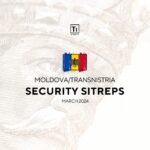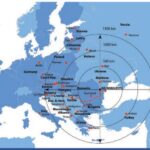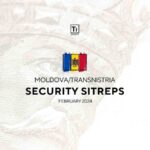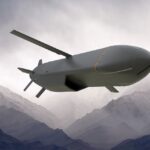The Republic of China (ROC or Taiwan) will proceed to overhaul its 142 F-16 A/B multi-role fighter jets. The modernization program “Phoenix Rising” was repeatedly delayed due to a shortage in manpower at Taiwan’s Aerospace Industrial Development Corporation (AIDC). Defense Minister Yen Teh-fa said that the problem was solved, after the AIDC hired 200 additional employees for the F-16 purpose-built facility in Taichung. Around 142 F-16 A/Bs of the Republic of China Air Force (RoCAF) will be upgraded to the latest F-16 Block 70/72 or “Viper” (V) configuration. Announced in 2016, the $5.3 billion “Phoenix Rising” overhaul program is expected to be completed by 2022.
TRUMP ADMINISTRATION APPROVES F-16V SALE TO ROC
In addition, the Republic of China Air Force (RoCAF) will also receive 66 brand-new F-16 V fighter jets as part of a historical arms sale, which was authorized by the Trump administration in August 2019. Afraid to damage relations with the People’s Republic of China (PRC), which views the ROC as a rogue province, the Bush and Obama administrations had previously refused the sale of modern F-16 jets to Taiwan.
The Block 70/72 or Viper variant combines capability upgrades that render the F-16 relevant in today’s competitive age, while maintaining the jet’s cost-efficiency. The features include Norhrop Grumman’s AN/APG-53 scalable agile beam radar, an active electronically scanned radar, a Raytheon-built mission computer, the “Link16” datalink, an advanced cockpit display, an enhanced electronic warfare suite, and the integration of newer weapons systems. Following the upgrades and acquisition, the RoCAF’s F-16s will be able to fire the AGM-154 Joint Stand-Off Weapon (JSOW), the AGM-88 High-speed Anti-Radiation Missile (HARM), and the AIM-9X Sidewinder infrared-guided air-to-air missile (AAM). The ROC expects to jets to be delivered between 2023 and 2026.

F-16 outfitted with a DB-110 ISR pod (rendering via Collins Aerospace)
According to local media, Taiwanese legislator Lu Yu-ling told parliament that the RoCAF is looking to acquire the UTC Aerospace Systems MS-110 multispectral airborne reconnaissance pod, which is a derivative of the company’s DB-110 dual-band long-range oblique photography pod. The MS-110 will provide the RoCAF with the capability to collect advanced imagery intelligence (IMINT) from a standoff range of 80 nautical miles, thus offering early-warning on potential enemy build-ups across the Taiwanese strait.

Daytime visible image scan at 11 nautical miles from a Royal Air Force Tornado aircraft (Unclassified Crown Copyright). At a heigh of 6 nautical miles, the MS-110 pod can photograph and scan an area of 200 nautical miles across the horizon.
INTEGRATING THE “VIPER” INTO TAIWAN’S “OVERALL DEFENSE CONCEPT”
While “Phoenix Rising” and the large F-16V procurment will enhance Taiwan’s deterrence posture, it will not change the balance of power in the region. Despite significant foreign purchases and idigenous developments, Taiwan’s military capabilities do not measure up to the People’s Liberation Army-Air Force’s (PLAAF) inventory of over 1,500 aircraft and China’s growing navy. To address this issue, Taiwan has adopted a new military doctrine based on asymmetric warfare.
The “Overall Defense Concept” (ODC) calls for the wholesale mining of the Taiwan strait and the ROC shores as well as for targeting advancing enemy forces with a barrage of anti-ship/coastal defense missiles and swarms of small and fast-moving boats. By imposing great costs on an amphibious assault through affordable means, Taiwan would be preserving its conventional capabilities for joint operations, once the United States Navy comes to its rescue. If they survive the PLA’s and PLAAF’s anticipated missile barrage on Taiwanese airfields, the RoCAF’s F-16s would play air defense and anti-surface roles in a projected conflict.
The ODC is part of the “resolute defense, multi-layered deterrence” strategy introduced by the Tsai administration. Beijing pursues an increasingly hardline policy against Taiwan, since the Tsai administration is unwilling to abide to the “One China” policy. The PRC is actively seeking to restrict Taiwan’s participation in the international community and engages in political warfare, aimed at undermining democracy in Taipei.
Founder of T-Intelligence. OSINT analyst & instructor, with experience in defense intelligence (private sector), armed conflicts, and geopolitical flashpoints.






